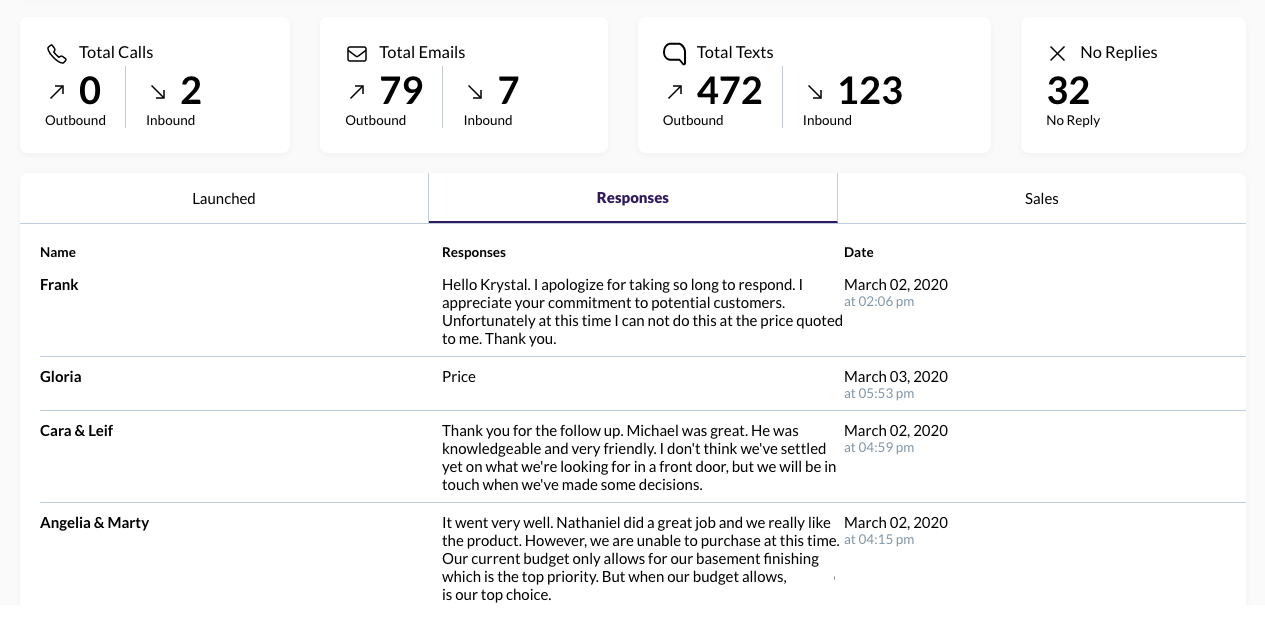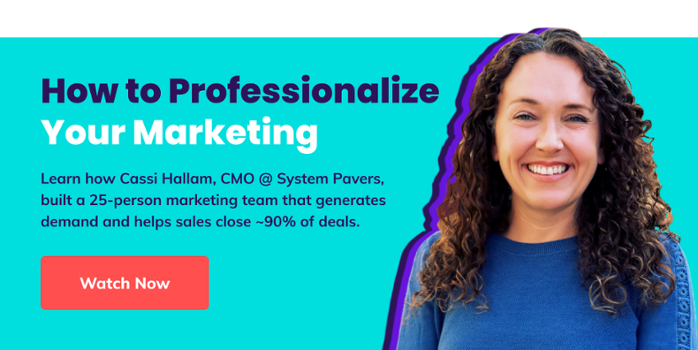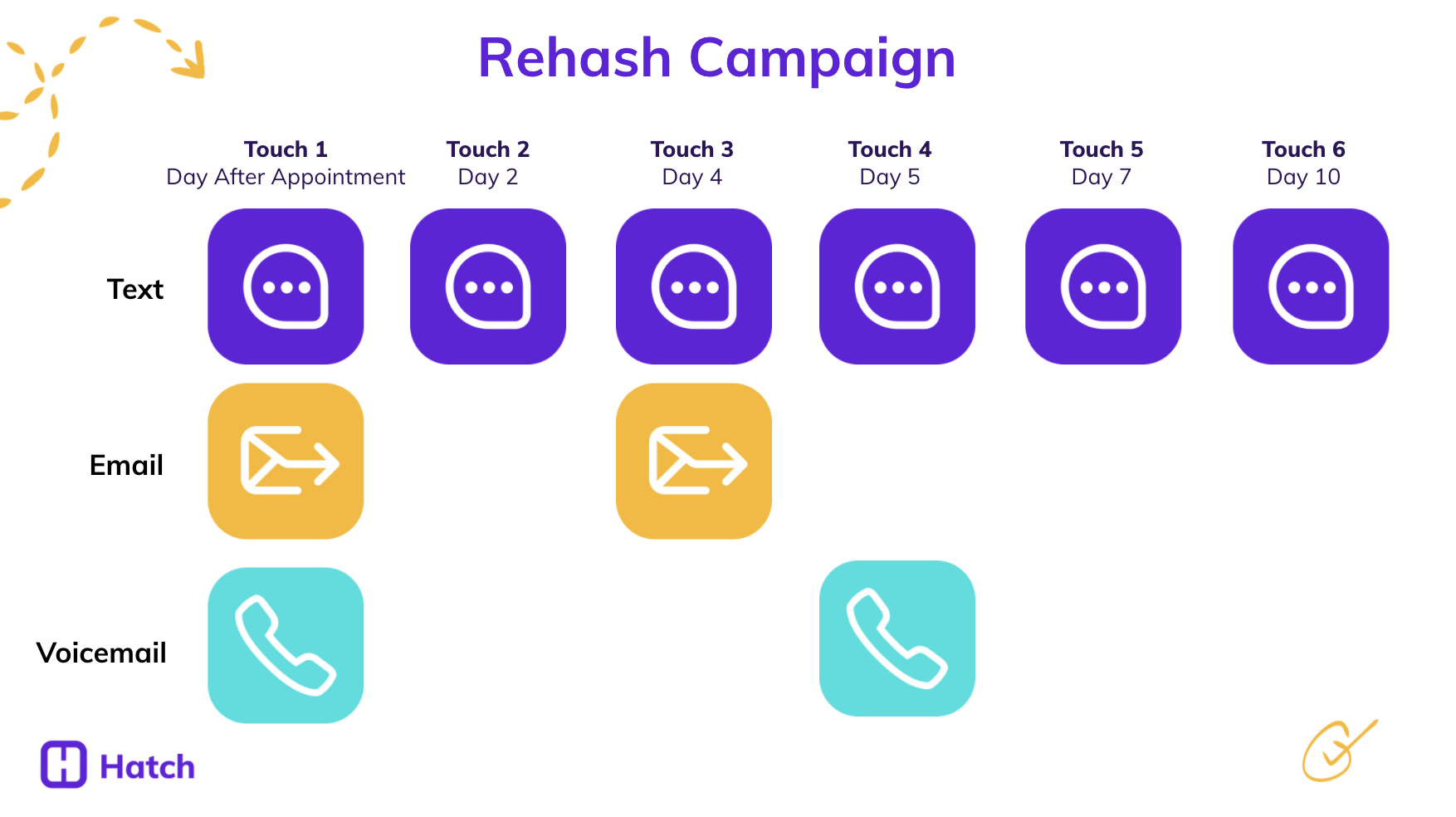Does your remodeling sales strategy look like the wild west?
You know - lone wolf sales reps setting off each morning, tape measures holstered on their side, bending the rules to do whatever it takes to get a sale that day.
If this is what it looks like when your sales meetings end...
...it's time to build an actual strategy.
No strategy home improvement selling is exactly why a stigma around sales reps exists - in-home appointments become less of a trusted consultation and more of a strong-armed invasion of privacy.
This can have a detrimental effect on your ability to close, get better reviews AND earn referrals/repeat business.
Processes will beat raw talent 9 times out of 10. That’s why the best remodeling businesses have tight-knit systems in place.
In this article, I’m going to dive into some popular tactics to consider when building your sales strategy. With a system in place, you’ll raise your odds of closing deals and create better customer experiences.
Talk about a win-win. 💰
Your Role As a Leader
More often than not, smaller remodeling companies just have the sales process floating around in their heads. Nothing is written down and passed to employees before they engage with clients.
As the leader of your business or sales team, you have the most experience to take stock of your current process (if one exists). Whiteboard and create notes about what works and - more importantly - what doesn’t when it comes to:
- Communicating with clients
- Scheduling projects
- Finishing and closing the project
Map out from the minute the lead comes all the way until a project is completed.
Pass these notes to your remodeling sales reps. Explain how you want them to engage with clients in your absence, and offer suggestions on making the sales presentation successful.
Looking for data points to build on? Your CRM is the best place to start.
Another place to gather great intel? Actual customer conversations. In Hatch, we have detailed reporting to help you make sound decisions on refining your sales strategy and coaching.

Pre-Appointment
Once you’ve gone wide with a high-level process in place, it’s time to go deep with each step of the sales lifecycle.
Pre-appointment is an important time to get your reps prepped by researching a client beforehand in order to understand what their needs are better.
Search for their home on Google Maps and see what you can learn from it. You’ll be able to see what their roof and driveway look like, how big the actual home is, and get an idea for the surrounding area.
Go to ‘Street View’ to get a better glimpse at how well maintained the home is.
It never hurts to look. 😬

For collaboration, you can even use a project management app or software like CompanyCam that allows you to store notes for projects.
In doing so, you can also keep electronic archives of all clients, both present and past.
That customer complaint about the scratched wall that wasn't there when your team left?
It's always nice to have that documented.
Setting Up the Appointment
From there, get in touch with your prospective client via phone, email or text before you visit in-home.
The way you go about setting up this initial appointment will be crucial – it will establish the tone and what comes next. Even if your team of reps are all excellent talkers I HIGHLY suggest writing a script.
This will go a long way towards optimizing conversations. It is especially helpful with new reps - the more familiar they get with a script, the less they'll need to rely on it.
If you’re looking for a place to start with your script, check out our free remodeling sales script template that you can take, copy and modify to fit your needs. 
During the Appointment
Make sure your team provides the client with a meeting agenda. By asking prospective clients to prepare for your meeting, you can help limit the consultation to about 60 minutes.
Send an email beforehand telling them what they are expected to bring to your meeting.
For the visiting day, create a mini-checklist for your team. Even better if you have a plan for in-home and virtual appointments respectively.
An in-home appointment checklist could look like this:
- Check over your notes in the car before the appointment.
- Make sure your phone and tablet are charged,
- Have writing material and a pencil on-hand.
- Bring an angle finder, flashlight, tape measure, presentation book, and appropriate notes.
- Put everything inside of a kit or something to make it look more professional and less cluttered.
While a virtual appointment checklist could look like this:
- Check over your notes before the appointment.
- Ensure your computer is charged.
- Check your background and lighting. The more professional, the better.
-
If measurements are needed, COORDINATE with the homeowner beforehand. Let them know what you’ll need them to measure and how to measure it. (Hover has an awesome tool for this that allows homeowners to easily take photos and measurements on their own.)
Stress the importance of punctuality and awareness while on-site.
Arriving early gives your reps time to settle down and put thought into a meeting beforehand, which can help them shake off any anxiety before heading in.
Additionally, staying aware and mentally noting things like the condition of the roof, siding, and interior (if you go inside) are all potential upsell opportunities in the near future. That’s the surest way to maximize each lead and stay proactive with your sales process.
You have less control of the situation once the appointment begins, but taking all of these steps will ensure your reps are best-prepared to handle whatever the homeowner throws at them.
Post-Appointment
It’s 2021 - you shouldn’t have to rely on the one-call close anymore.
With an effective sales follow-up process, you can build an organized, professional follow-up to leads that have received a quote, estimate, demo, or scope of project but didn’t buy.
We’ve seen it increase close rates as much as 7-10%. Which is HUGE when your average selling price is usually north of $1k.
To get an idea of when and how to communicate with your lead, here’s the best-performing sales follow-up cadence we’ve seen from Hatch’s platform.

If you’re interested in free templates for messaging and objection-handling, click here to download our rehash playbook.
By building out a sales strategy like the one above, you can start the most important part - tweaking and fine-tuning. Once you get it just right, your process transforms your sales team a well-oiled machine.
Your current reps, potential new hires, and bottom-line revenue will all thank you for it.
